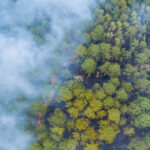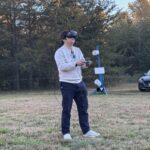Task 132
Analysis and Evaluations of Passive Microwave Measurements
Principal Investigator(s):
Nai-Yu Wang
Sponsor(s):
M. Schwaller
Last Updated:
October 26, 2012 15:25:32
Description of Problem
Measurements from polar orbiting satellites, in particular, microwave sensors, offer perhaps the most viable means to develop global precipitation retrievals. Measurements from the Tropical Rainfall Measuring Mission (TRMM) and the Global Precipitation Mission (GPM) will exploit such data to provide global, three-hourly precipitation monitoring. Much research and development needs to be done to prepare for the GPM core satellite launch in 2013. The next three years is the most critical time to develop and deliver the pre-launch algorithms. We’ll work closely with several Precipitation Measurement Missions (PMM) science team working groups (WGs) and team members to develop and deliver the baseline precipitation algorithms over land.
Scientific Objectives and Approach
Development and evaluation of land surface emissivity estimates extracting from different methods (e.g., emissivity calculations from land surface emissivity model coupled with land surface model, or emissivity estimates from satellite observations) and its impact on the precipitation retrievals.
Accomplishments
An example of emissivity estimates over the Amazon (7S, 70W) from AMSR-E 19V, 37V and 85V measurements for the year of 2006 is shown in the following figure. Blue lines represent the calculated emissivity using AMSR-E brightness temperatures and the NCEP GDAS profiles of temperature, relative humidity and cloud mixing ratio. The red dots in the figure are calculated assuming clear sky (no clouds or precipitation in the vertical profile). Notice that the effect of clouds and precipitation on the brightness temperatures increases with frequency, which reflects on the highly varying 85V emissivity estimates.
Other Publications and Conferences
Presented the status and plan for the surface characteristics working group in the Combined algorithm team meeting in May 2010 in College Park Maryland.
Task Figures
| Fig. 1 – Emissivity estimates over the Amazon |





